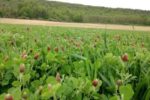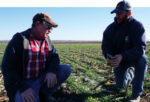Advertise Follow Us
Items Tagged with 'radish'
ARTICLES
Grower breaks up compaction & fights pests with several species in Great Lakes region
Read More
No-Tilling Wheat for Improved Workload, Bottom Line
Ohio no-tiller Nathan Brause says unspectacular profits shouldn’t deter adding wheat to crop rotation.
Read More
Reddick Farms Goes All in on No-Till and Cover Crops in Kentucky
Father-son duo takes leap of faith after eye-opening experience at National No-Tillage Conference.
Read More
Conquering Stubborn Soils and Residue with a Switch to Strip-Till
Seeding and fertilizing experimentation enables Nebraska farmers to better manage residue, convert poor fields into pivotal performers.
Read More











